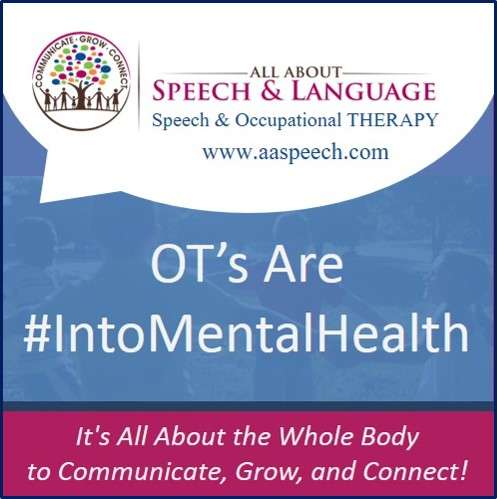Introduction
The mental health of children and adolescents has been reported to be of worldwide concern.1 Relevant epidemiological data are inconsistently reported; in the United Kingdom a study between 1999 and 2004 reported that one in 10 children and adolescents aged five to 16 years were diagnosed with a mental health difficulty, including conduct, emotional, attentional and neurodevelopmental disorders.2 More recently, one in eight children and adolescents aged 10 to 15 years in the United Kingdom self-reported experiencing symptoms of mental ill-health, as measured by the Strengths and Difficulties Questionnaire.3 Similar findings have been reported in Australia where one in seven children and adolescents aged seven to 17 years experience a mental disorder.4 Studies have also reported that children and adolescents experience higher levels of anxiety, depression and behavioral problems than they did 30 years ago.5,6 These changes have occurred within a shifting social and cultural landscape, which has included increased school attainment, poverty, substance use and changes to family structure.7
The mental health needs of children and adolescents have become an important agenda for healthcare services.1 Good mental health forms the foundation from which children and adolescents develop resilience and skills to become well-rounded individuals who can cope with the complexities of adult life. There is a positive relationship between some mental health disorders experienced in adolescence and future difficulties in adulthood,8 although this is complex and multifactorial.7 Current worldwide mental health strategy is emphasizing the need for evidence-based mental health interventions.1 Improving mental health interventions is identified and agreed upon as a priority by children and adolescents, their parents/carers,9 and healthcare professionals.10
Child and adolescent mental health services have been shaped by psychiatry, clinical psychology and psychotherapy; current intervention trends are for “talking therapies”, such as cognitive behavioral therapy and family therapy.11 A recent report has suggested that the evidence for measuring the success of intervention outcomes with this population is flawed and inconclusive.12 Occupational therapists have been part of multidisciplinary teams in child and adolescent mental health services for over 60 years, but it has been reported that they have struggled to carve out a profession-specific role.13,14 The reasons for this are multifactorial, but include an uncoordinated approach to research, particularly the development of profession-specific interventions.15 The complexity of occupational therapy as an intervention has also contributed to difficulties in developing effective interventions.16
The outcome of occupational therapy is participation, which the International Classification of Functioning Disability and Health17 defines as “involvement in a life situation”. Occupational therapists translate this as “participation in everyday occupations”18 whereby people participate in and are satisfied with their activities of everyday life. This includes the occupations of self-care (such as getting dressed or eating), productivity (such as going to work or school) and leisure/play (such as playing card games or basketball).19
Occupational therapy interventions to address participation can be delineated as occupation-based and/or occupation-focused.20 Occupation-based interventions involve the client’s participation in a meaningful and purposeful occupation within the context of their everyday life, for example, hiking or baking. Occupation-focused interventions use occupational skills training in the context of occupational performance relevant to the person’s goals, for example, the provision of adaptive equipment or the teaching of compensatory strategies during the occupation of dressing.20 Interventions that focus on changing a person’s underlying body functions or structures are not occupation-based or occupation-focused.
A literature search, including databases of systematic reviews such as the JBI Database of Systematic Reviews and Implementation Reports and PROSPERO, for similar existing systematic reviews identified one earlier review.21 This previous review examined occupation-based and activity-based interventions within the scope of occupational therapy practice for children and adolescents with mental health difficulties. The review included 124 articles and did find evidence for occupational therapy interventions at universal, targeted and intensive levels. However, this earlier review differed in three key ways from the review proposed in this protocol. Firstly, the interventions included were much broader than occupation-based or occupation-focused interventions, for example, social-emotional interventions, which are not considered by all to be within the scope of occupational therapy practice. Secondly, the earlier review considered interventions for those without mental illness, those at risk of mental illness, as well as those with identified mental health disorders. Thirdly, the review evaluated outcomes related to psychosocial component skills, such as social interaction and task-focus that were believed to lead to participation in occupations, rather than outcomes being related to occupational participation itself. The review detailed in this protocol will therefore be the first where the population has an identified mental health difficulty, the intervention is occupation-based and/or occupation-focused occupational therapy, and the outcome is related to occupational participation.
Occupational therapy is a complex intervention because it contains several interacting components.16 Therefore, to develop an evidence-based occupational therapy intervention, it is suggested that a rigorous approach, such as the Medical Research Council (MRC) framework,22 is utilized. The MRC guidance reports five elements of intervention design: development, piloting, evaluating, reporting and implementing. This review will contribute to addressing the first element: intervention development. Intervention development is further divided into three stages: (i) identifying the evidence base, (ii) developing theory, and (iii) operationalizing the techniques.22 This review will focus on the first stage, identifying the evidence, and will contribute to a program of research to rigorously develop an occupation-based and/or occupation-focused complex intervention for children and adolescents with mental health difficulties.
Inclusion criteria
Participants
The review will consider studies that include children and adolescents inclusive of the ages five to 16 years who have any of the mental health difficulties commonly experienced by this age group, for example: depression, self-harm, generalized anxiety disorder, post-traumatic stress disorder, attention deficit hyperactivity disorder, autism and eating disorders.7 Studies which include participants identified as having more than one mental health difficulty, or a comorbid intellectual or physical disability will be included in the review. This age group was selected because if younger children were included, the interventions are more likely to target parents, as children are less likely to be able to address the issues themselves,23 and older adolescents may overlap with adult interventions and services.2
Intervention
This review will consider studies that evaluate occupational therapy interventions, i.e. interventions that are either occupation-based and/or occupation-focused.20 Occupation-based interventions include those where the participant is actively engaged in an occupation that has meaning and/or purpose for them; the occupation itself is the therapeutic agent of change, for example, going swimming or taking a shower. Occupation-focused interventions include those where the participant is engaged in the skills needed to participate in everyday life tasks that are relevant to their goals, and the intent of the intervention is enhanced participation in daily life, for example, the teaching of tying shoe laces with the intent to facilitate independence in dressing. Interventions that focus on changing underlying body structures and functions will be excluded.
Comparator
This review will consider studies that compare the intervention to any comparator, such as treatment as usual, as well as no comparator.
Outcomes
This review will consider studies that include participation in everyday occupations as an outcome. This outcome will be measured by standardized assessment tools or validated self-report measures of: occupational participation, performance or engagement, such as the Canadian Occupational Performance Measure; functional ability, such as the School Function Assessment; or satisfaction with activities of daily life, such as the Child Occupational Self-Assessment.
Phenomena of interest
The phenomenon of interest for this review is the experiences of children and adolescents with mental health difficulties receiving occupational therapy interventions that are occupation-based and/or occupation-focused.
Context
This review will include studies conducted in any context.
Types of studies
This review will consider both experimental and quasi-experimental study designs including randomized controlled trials, non-randomized controlled trials, before and after studies and interrupted time-series studies. In addition, analytical observational studies including prospective and retrospective cohort studies, case-control studies and analytical cross-sectional studies will be considered for inclusion. This review will also consider descriptive observational study designs including case series, individual case reports and descriptive cross-sectional studies for inclusion. The textual component of this review will consider publications that describe occupational therapy interventions, such as practice reports and polices. Studies published in English will be included. Studies published since 1927 will be included as this encompasses the time period of the first occupational therapy journals.
Methods
Search strategy
The search strategy will aim to find both published and unpublished studies. An initial limited search of MEDLINE and CINAHL has been undertaken, followed by analysis of the text words contained in the title and abstract, and of the index terms used to describe each article. This informed the development of a search strategy which will be tailored for each information source. A full search strategy for MEDLINE is detailed in Appendix I. The reference list of all studies selected for critical appraisal will be screened for additional studies.
Information sources
The databases to be searched include: AMED via EBSCO, CINAHL Complete via EBSCO, Cochrane Controlled Trials Register, ERIC via EBSCO, PsycINFO via EBSCO, MEDLINE via PubMed, and OTSeeker. This will include keywords and index terms drawn from the thesaurus for each of the databases to be included in searching. The reference list of all identified reports and articles will be searched for additional studies; this will include the use of backwards and forwards citation tracking. The trial registers to be searched include: Cochrane Central Register of Controlled Trials. The search for unpublished studies will include: Conference Proceedings Citation Index via Web of Science, Dissertation Abstracts via ProQuest, Google Scholar, Networked Digital Library of Theses and Dissertations, OpenDOAR and Open Grey.24
Study selection
Following the search, all identified citations will be collated and uploaded into EndNote25 and duplicates removed. Titles and abstracts will then be screened by two independent reviewers for assessment against the inclusion criteria for the review. Studies that may meet the inclusion criteria will be retrieved in full and their details imported into Joanna Briggs Institute System for the Unified Management, Assessment and Review of Information (JBI SUMARI).26 The full text of selected studies will be retrieved and assessed in detail against the inclusion criteria. Full text studies that do not meet the inclusion criteria will be excluded and reasons for exclusion will be provided in an appendix in the final systematic review report. Included studies will undergo a process of critical appraisal. The results of the search will be reported in full in the final report and presented in a Preferred Reporting Items for Systematic Reviews and Meta-Analyses (PRISMA)27 flow diagram. Any disagreements that arise between the reviewers will be resolved through discussion or with a third reviewer.
Assessment of methodological quality
Selected studies will be critically appraised by two independent reviewers at the study level for methodological quality in the review using the standardized critical appraisal instruments from JBI SUMARI28 for the following study types: quantitative, qualitative and textual. Any disagreements that arise will be resolved through discussion or with a third reviewer. All studies, regardless of their methodological quality, will undergo data extraction and synthesis (where possible).
Data extraction
Data will be extracted from papers included in the review by the primary reviewer using the standardized data extraction tool available in JBI SUMARI.28 The data extracted will include specific details about the interventions, populations, study methods and outcomes of significance to the review question and specific objectives. Authors of papers will be contacted to request missing or additional data where required.
Data synthesis
The following two stages of data synthesis will be conducted, as per JBI guidance on conducting systematic reviews of this nature.28
Stage 1
Quantitative papers will, where possible, be pooled in statistical meta-analysis using JBI SUMARI.28 Effect sizes expressed as a relative risk for cohort studies, odds ratios for case control studies (for categorical data) and weighted mean differences (for continuous data), and their 95% confidence intervals will be calculated for analysis. It is likely that a random effects model will be used and heterogeneity will be assessed statistically using the standard chi-square test; however, selection of the meta-analysis model will be guided by Tufanaru et al.29 If statistical pooling is not possible, the findings will be presented in narrative form including tables and figures to aid in data presentation, where appropriate.
Qualitative research findings will, where possible, be pooled using JBI SUMARI.28 This will involve the aggregation or synthesis of findings to generate a set of statements that represent that aggregation, through assembling the findings (Level 1 findings) rated according to their quality and categorizing these findings on the basis of similarity in meaning (Level 2 findings). These categories are then subjected to a meta-synthesis to produce a single comprehensive set of synthesized findings (Level 3 findings) that can be used as a basis for evidence based practice. Where textual pooling is not possible, the findings will be presented in narrative form.
Textual papers selected for retrieval will be assessed by the primary and secondary reviewer for authenticity prior to inclusion in the review using standardized critical appraisal instruments from JBI SUMARI.28 Textual paper findings will be analyzed using the procedure described above for meta-aggregation. Any disagreements that arise between the reviewers will be resolved through discussion or with a third reviewer. Each of the individual syntheses will be reported in line with PRISMA27 guidelines.
Stage 2
The findings of each single-method synthesis included in this review will be aggregated. This will involve the configuration of the findings to generate a set of statements that represent that aggregation. This will be achieved through coding to attribute a thematic description to all quantitative data, assembling all of the resulting themes from quantitative and qualitative and textual syntheses.
Assessing certainty in the findings
A Summary of Findings will be created using GRADEPro GDT30 software. The GRADE approach for grading the quality of evidence will be followed. The Summary of Findings will present the following information where appropriate: absolute risks for treatment and control, estimates of relative risk, and a ranking of the quality of the evidence based on study limitations (risk of bias), indirectness, inconsistency, imprecision and publication bias.
The following outcomes will be included in the Summary of Findings: objectives, study design, level of evidence, participants, interventions, outcomes, and results.
Acknowledgements
The reviewers wish to acknowledge the support of the Participation in Everyday Life group at University of Plymouth, and the Young Dynamos Young Persons Advisory Research Group in Bradford.
Funding
Funding for this review is being provided by the Royal College of Occupational Therapists.



